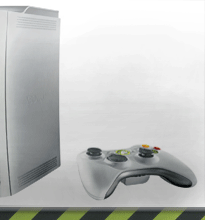



 |
 |
 |
 |
|
|
|
|
|
|
|
|
|
|
History
| Page 2 |
|
Home computers While the fruit of the development in early video games appeared mainly for the consumer of video arcades and home consoles, the rapidly evolving home computers of the 1970s and 80s allowed their owners to program simple games and play them at home. Hobbyist groups for the new computers soon formed and game software followed.
Home computer
Many of the games created in these home computers were clones of the
games in arcade and in the
University mainframe computers and were not a big business. These
games where distributed through a variety of channels, such as printing the
game’s source code in books, magazines and newsletters, which
allowed users to type in the code for them. This casual way of
distributing the games lead to no ownership of games. Early game
designers never thought to copyright their games. These lead to
various game codes being taken by home computer companies such as
Apple, Commodore, Tandy and others had many games that other people
had created but credit was not given to them. Another distribution
channel was the physical mailing and selling of floppy disks,
cassette tapes and ROM cartridges. Soon a small cottage industry was
formed, with amateur programmers selling disks in plastic bags put
on the shelves of local shops, or sent through the mail.
By the mid-1970s video games were found on
cartridges. Programs were burned onto ROM chips that were mounted
inside plastic cartridge casings that could be plugged into slots on
the console. When the cartridges were plugged in, the
general-purpose microprocessors in the consoles read the cartridge
memory and ran whatever program was stored there. Rather than being
confined to a small selection of games included in the box,
consumers could now amass libraries of game cartridges. The first of
these consoles to use the ROM cartridge format was the Fairchild
'Video Entertainment System (VES)', released in 1976. After that
three other machines were dominating the market in North America.
These were the Atari 2600, created by Atari in
1977, the Intellivision, introduced by
Mattel in 1980 and the ColecoVision, introduced by Coleco Industries
in 1982. In the next years more games were created and more
companies where being founded but the market was slow and the games
were easily made by anyone outside a company.
The Golden Age of Arcade Games reached its full steam in the 1980s,
with many technically innovative and genre-defining games in the
first few years of the decade. Due to the great releases of games
the Arcades market skyrocketed into success. Also, with the
introduction of the first 3D game,
3D Monster Maze
, there was something for anyone.
The home computers games also keep going into
popularity due to the popularized text adventure games in home
computers and established developer Infocom’s dominance in the
field. As these early computers often lacked graphical capabilities,
text adventures proved successful. When affordable computers started
catching up to and surpassing the graphics of consoles in the late
1980s, the games' popularity waned in favor of graphic adventures
and other genres. The text adventure would eventually be known as
interactive fiction and a small dedicated following has kept the
genre going, with new releases being nearly all free. Home computers
games went further than thought, new home computers were release
with more power and faster lead to better games. However what
differentiated home computer games with Arcade games and console
games was the wonderful thing called the internet.
Early online gaming It all started with Dialup bulletin board
systems. This was sometimes used for online game playing. The
earliest such systems, in the late 1970s and early 1980s, had a
crude plain-text interface, but later systems made use of
terminal-control codes to get a pseudo-graphical interface. Some
BBSes (Bulletin Board Systems) offered access to various games which
were playable through such an interface, ranging from text
adventures to gambling games like blackjack. On multiuser` , there
were sometimes games allowing the different users to interact with
one another; some such games of the fantasy role-playing variety
were known as MUDs, for "multi-user dungeons". These games
eventually evolved into what are known today as MMORPG. This
popularity in online gaming increased the Commercial online services
during this decade. When it all began with text based games at the
beginning at the decade it moved on to fully-graphical environments
using software specific to each personal computer platform at the
end of the decade.
|
